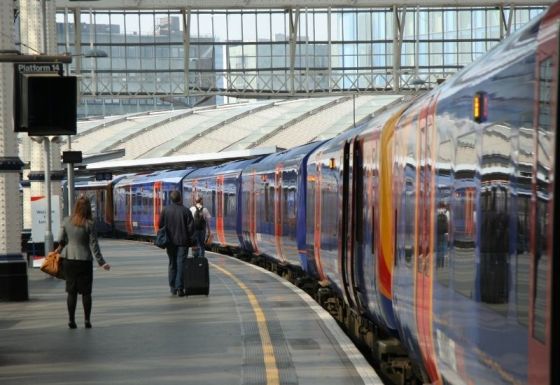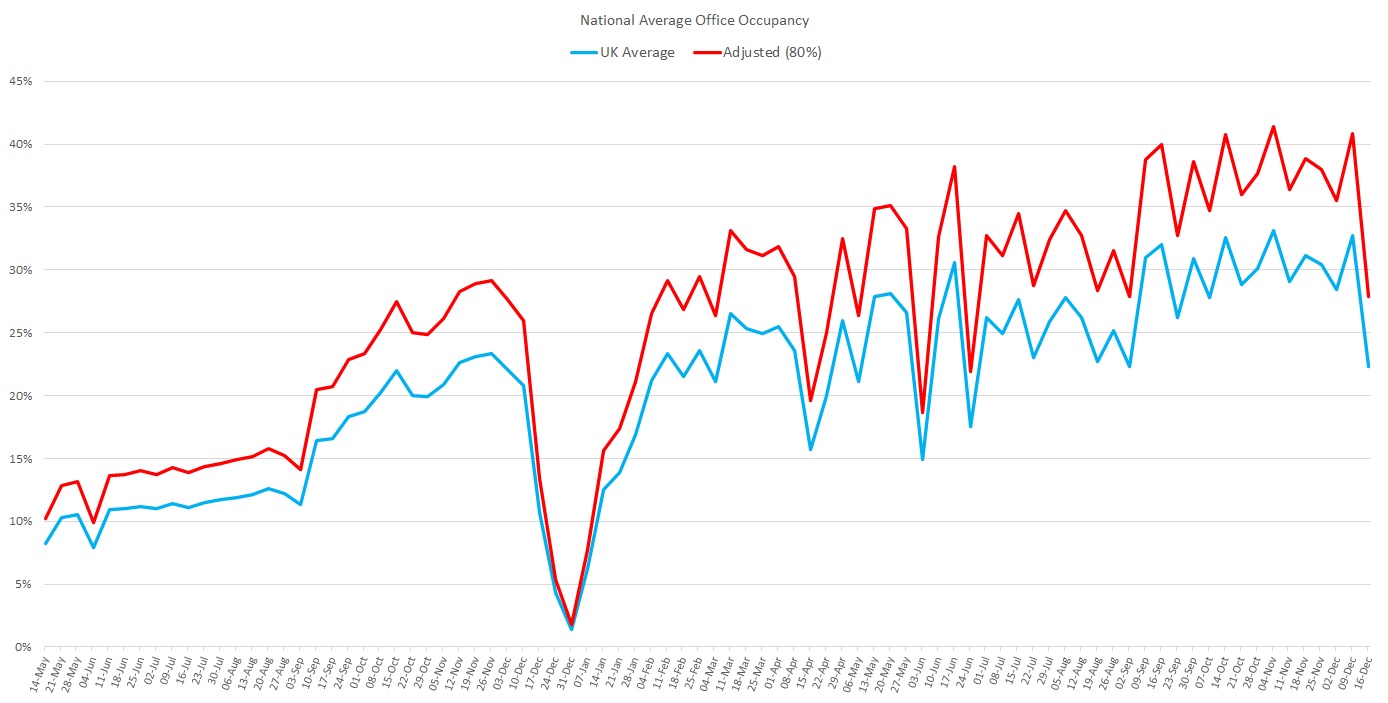News Release: While occupancy levels fall due to rail strikes, remote working provides many office-based businesses with resilience

With national rail strikes on three days in the week ending 16th December, office occupancy rates across the country fell by over ten percentage points compared to the previous week, according to research data from Remit Consulting.
“Certain cities around the UK, which are more reliant on trains as a method of commuting than others, were harder hit than others. The cold weather, which brought hazardous travelling conditions to large parts of the country, including the capital, will also have had an impact on the number of staff working from their desks,” said Lorna Landells of Remit Consulting.
“Office occupancy rates in London saw a fall in the weekly average of over 14%, with the busiest day being Thursday, when occupancy rates reached almost 30%, before falling to under 10% the following day.
“While the impact of the industrial action has been dramatic on office occupancy rates, the widespread adoption of remote working practices during the pandemic means that office-based businesses have a resilience to such events in a way that might not have been the case before the Covid-19 lockdowns. This will not be true for retail and leisure businesses that rely on commuters and passing trade from office workers,” she added.

The property sector has diverse views in regarding what constitutes maximum occupancy for offices, with some industry commentators suggesting that, due to holidays, external meetings, staff sickness and other operational issues, offices were only ever 60-80% ‘full’ before the pandemic.
Previous research from the British Council for Offices (BCO) suggested a figure of 60%, while other market practitioners suggest a figure of between 70% and 80% at peak times in the calendar, although this will have varied widely according to individual buildings and businesses. The graph shows an adjusted figure to compare current figures with a possible pre-pandemic “80% average office occupancy”.